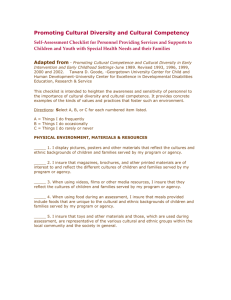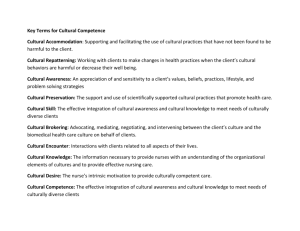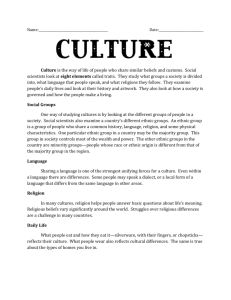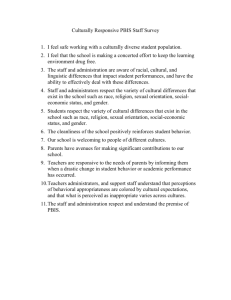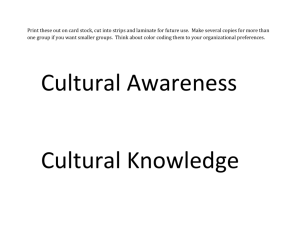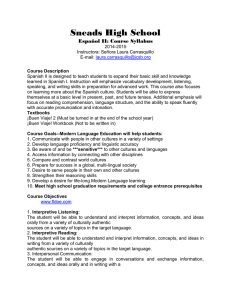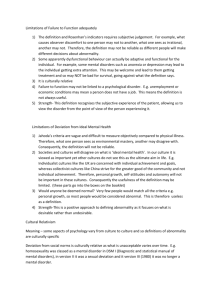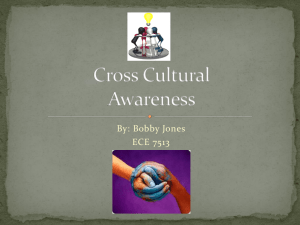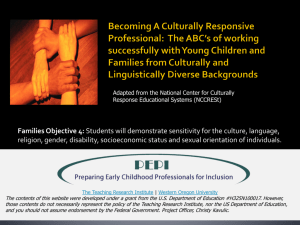Cultural Competency Student Self-Evaluation
advertisement
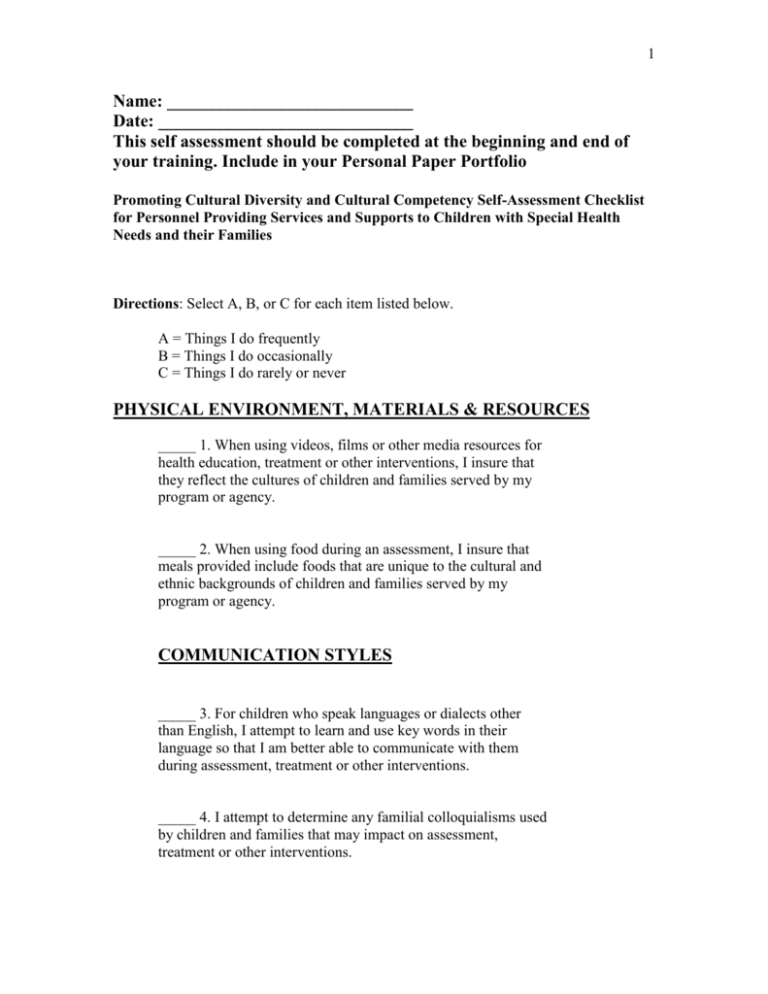
1 Name: ____________________________ Date: _____________________________ This self assessment should be completed at the beginning and end of your training. Include in your Personal Paper Portfolio Promoting Cultural Diversity and Cultural Competency Self-Assessment Checklist for Personnel Providing Services and Supports to Children with Special Health Needs and their Families Directions: Select A, B, or C for each item listed below. A = Things I do frequently B = Things I do occasionally C = Things I do rarely or never PHYSICAL ENVIRONMENT, MATERIALS & RESOURCES _____ 1. When using videos, films or other media resources for health education, treatment or other interventions, I insure that they reflect the cultures of children and families served by my program or agency. _____ 2. When using food during an assessment, I insure that meals provided include foods that are unique to the cultural and ethnic backgrounds of children and families served by my program or agency. COMMUNICATION STYLES _____ 3. For children who speak languages or dialects other than English, I attempt to learn and use key words in their language so that I am better able to communicate with them during assessment, treatment or other interventions. _____ 4. I attempt to determine any familial colloquialisms used by children and families that may impact on assessment, treatment or other interventions. 2 _____5. I use visual aids, gestures, and physical prompts in my interactions with children who have limited English proficiency. _____ 6. I use bilingual staff or trained volunteers to serve as interpreters during assessment, meetings, or other events for parents who would require this level of assistance. 7. When interacting with parents who have limited English proficiency I always keep in mind that: _____ * limitations in English proficiency is in no way a reflection of their level of intellectual functioning. _____ * their limited ability to speak the language of the dominant culture has no bearing on their ability to communicate effectively in their language of origin. _____ * they may or may not be literate in their language of origin or English. _____ 8. When possible, I insure that all notices and communiqués to parents are written in their language of origin. _____ 9. I understand that it may be necessary to use alternatives to written communications for some families, as word of mouth may be a preferred method of receiving information. VALUES & ATTITUDES _____ 10. I avoid imposing values that may conflict or be inconsistent with those of cultures or ethnic groups other than my own. _____ 11. In group therapy or treatment situations, I discourage children from using racial and ethnic slurs by helping them understand that certain words can hurt others. 3 _____ 12. I screen books, movies, and other media resources for negative cultural, ethnic, or racial stereotypes before sharing them with children and their parents served by my program or agency. _____ 13. I intervene in an appropriate manner when I observe other staff or parents within my program or agency engaging in behaviors that show cultural insensitivity or prejudice. _____ 14. I understand and accept that family is defined differently by different cultures (e.g. extended family members, fictive kin, godparents). _____ 15. I recognize and accept that individuals from culturally diverse backgrounds may desire varying degrees of acculturation into the dominant culture. _____ 16. I accept and respect that male-female roles in families may vary significantly among different cultures (e.g. who makes major decisions for the family, play and social interactions expected of male and female children). _____ 17. I understand that age and life cycle factors must be considered in interactions with individuals and families (e.g. high value placed on the decisions of elders or the role of the eldest male in families). _____ 18. Even though my professional or moral viewpoints may differ, I accept the family/parents as the ultimate decision makers for services and supports for their children. _____ 19. I recognize that the meaning or value of medical treatment and health education may vary greatly among cultures. _____ 20. I accept that religion and other beliefs may influence how families respond to illnesses, disease, and death. 4 _____ 21. I recognize and accept that folk and religious beliefs may influence a family's reaction and approach to a child born with a disability or later diagnosed with a disability or special health care needs. _____ 22. I understand that traditional approaches to disciplining children are influenced by culture. _____ 23. I understand that families from different cultures will have different expectations of their children for acquiring toileting, dressing, feeding, and other self help skills. _____ 24. I accept and respect that customs and beliefs about food, its value, preparation, and use are different from culture to culture. _____ 25. I seek information from family members or other key community informants, who will assist in service adaptation to respond to the needs and preferences of culturally and ethnically diverse children and families served by my program or agency. _____ 26. I advocate for the review of my program's or agency's mission statement, goals, policies, and procedures to insure that they incorporate principles and practices that promote cultural diversity and cultural competence. There is no answer key with correct responses. However, if you frequently responded "C", you may not necessarily demonstrate values and engage in practices that promote a culturally diverse and culturally competent service delivery system for children and families. Bureau of Primary Health Care Project DSLR Project Maternal and Child Health Project 5 SIDS / ID Project Tawara D. Goode, -Georgetown University Child Development Center-UAP-Adapted from - Promoting Cultural Competence and Cultural Diversity in Early Intervention and Early Childhood Settings-(June 1989, revised 1993, 1996, 1997, 1999 and March 2000). This checklist is intended to heighten the awareness and sensitivity of personnel to the importance of cultural diversity and cultural competence in human service settings. It provides concrete examples of the kinds of values and practices which foster such an environment.
